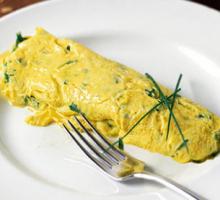There are three things that primarily keep people from taking on serious projects in the kitchen: Money, equipment and intimidation. The first two are easy to dispel. The truth is, cooking excellent food is no more expensive than buying packaged goods or eating out. It's actually often cheaper to go for the kinds of ingredients that chefs prefer anyway, namely fresh and locally produced items. A smart shopper can eat like a king without putting extra stress on the food budget. Kitchen utensils are also sorely misunderstood. A set of proper pots and pans are easy to come by and don't have to be the expensive sort from specialty stores. As for knives, there's really no reason to have more than a good chef's knife, a boning knife and a paring knife in your kitchen. The rule is to aim for generalized tools and learn how to use them. The investment will pay for itself in home-cooked meals. But it's that last problem that stops even the best-equipped cooks. Here are some cooking myths that need to be debunked once and for all.
French is Fussy
Saying that French food requires too much work and skill is to misunderstand the very principles of modern cooking. Honestly, a lot of the basic techniques of culinary art from the 20th century on have been based on principles invented in French kitchens. There are no esoteric secrets in the best, most pervasive French dishes. The key to understanding French cooking is reducing the concepts to their bare, unpretentious roots. A crepe? That's just a rich pancake spread thin enough to cook quickly and wrap a simple filling. Coq au Vin? Chicken stewed in wine and field vegetables. The list goes on like this. All it takes is a little Anglicization.
Omelets are Impossible
This one seems to be a major hurdle for budding chefs. Omelets are temperamental and require some experience, but there are really only two things you need to know to make one right. First, a slick pan is a happy pan and second, eggs continue to cook after they've been plated. It's important to know how much oil is the right amount of oil for anything that might get stuck to the pan. Even in non-stick cookware a little lubrication is necessary. Just don't turn it into a deep-frying project and you should be fine. Also, learn to appreciate the value of the pan jiggle. If your omelet can slide around in the pan, it's ready to fold and you've oiled properly. When you do fold, don't be afraid of runny egg in the center. Remember, eggs cook quickly and as long as there's heat, even residual heat in the eggs themselves. It won't take long after the fold for the rest of the omelet to set, so be careful not to overcook it.
Steak is Easy, Great Steak is a Mystery
Ya wanna know the difference between that mediocre steak you made at home and the amazing steak you had at a restaurant? Garlic butter. Seriously. The open secret of restaurant-quality steak is and has been for decades the application of garlic butter halfway through the cooking process. Making garlic butter is easy. All it takes is minced garlic, a pinch of salt, some unsalted butter and a small sauce pan to melt it all together. Refrigerate it to let it set and then add a dollop to the top of your steak after you flip it. The nutty flavor of the butter and the sharp aromatics of the garlic elevate the taste of the steak like nothing else. Aside from getting a decent cut of meat, that's all you need for a proper steak at home.
